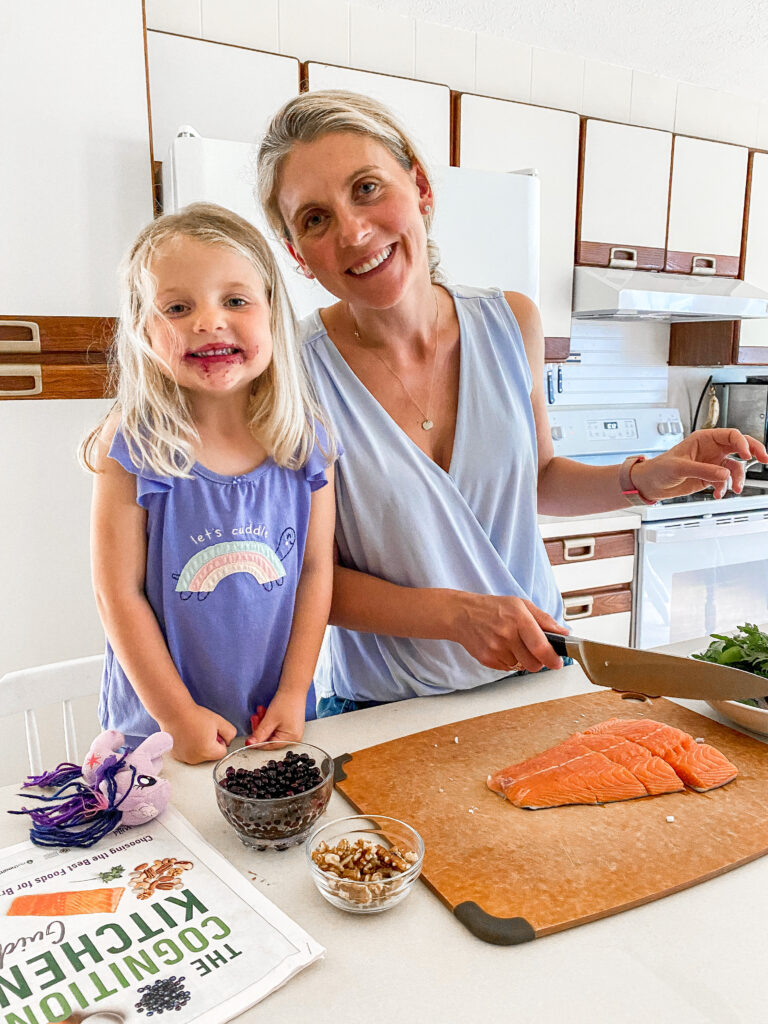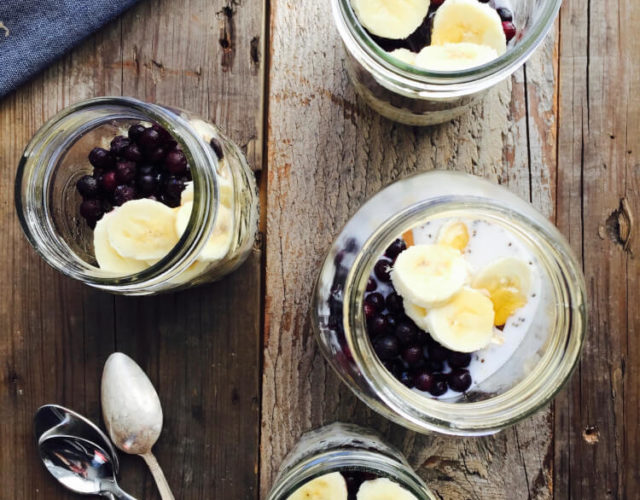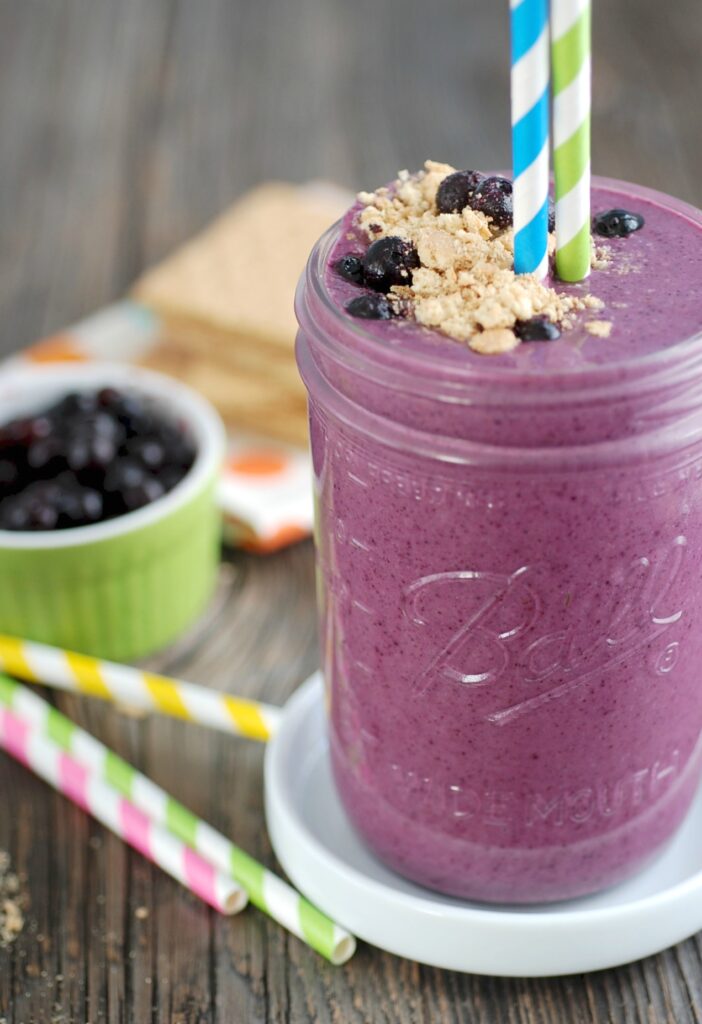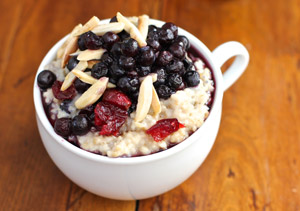With the back-to-school season here, parents are gearing up for the bustling year ahead. The transition from carefree summer days to structured school routines can pose unique challenges, especially when it comes to ensuring children receive the nutrition they need to perform their best in the classroom. To help with some back-to-school nutrition strategies, we asked one of our favorite mom dietitians, Jenny Shea Rawn, for some tips. Jenny has a Master of Science in Nutrition and a Master of Public Health degree, is an accomplished author, and the loving mother of two young kids, Lucca and Lexi. In her career and role as a mother, she has a profound understanding of the importance nutrition plays in child development. During our conversation, she shared with us her approach to balanced breakfasts and smart lunch box choices that can help kids sustain their energy levels and cognitive function during the long school days.

A Balancing Act: Nutrient-Packed Breakfasts
When it comes to breakfast, Jenny advocates for protein, whole grains, and the inclusion of fruits or vegetables. “It’ll help with blood sugar stabilization and ensure that their brains can be thinking and they can maintain good energy throughout the day,” Jenny explained. To simplify busy mornings, she relies on quick and easy recipes like overnight oats, oatmeal, or smoothies. Her secret weapon? Infusing nutrient-rich wild blueberries. “Besides their nutritional benefits, the berries add a nice flavor to the dishes without adding any sugar. Plus, kids love the purple color. These recipes are super simple, nothing fancy—nobody has time for fancy stuff during the busy school week!”
Emphasizing the value of breakfast, Jenny makes sure her kids begin their day with a meal that nurtures their bodies and minds. Her approach aligns with decades of research, emphasizing that a balanced diet (especially one that includes wild blues) supports cognitive function and concentration in kids. Give one of these three kid-friendly breakfast recipes a try to start your children’s day off right.
Kid-Friendly Wild Blueberry Breakfast Recipes:
- Wild Blueberry Almond Butter Overnight Oats: By prepping this dish the night before, Jenny’s found that her mornings run a whole lot smoother! Wild Blueberry-Almond Butter Overnight Oats only take 10 minutes to make, then they sit in the fridge overnight. This healthy mix of fruit, nuts, and grains will help power your kids’ morning while still tasting absolutely delicious.

- Wild Blueberry Kefir Breakfast Smoothie: If you’re a fan of the one-minute breakfast, this one’s for you. This Kid-Friendly Wild Blueberry & Kefir Breakfast Smoothie is bursting with flavor—all you have to do is throw five ingredients in a blender to serve up some vibrant, purply-blue smoothie goodness.

- Wild Blueberry, Cranberry and Almond Oatmeal: Oatmeal is a super healthy breakfast option for your child–especially when you add some wild blueberries into the mix. Spice up your morning oatmeal and add some color to your child’s diet by trying this Wild Blueberry, Cranberry and Almond Oatmeal. Jenny’s kids love adding wild blueberries to their oatmeal because it turns purple! Win-win: nutrients and a fun color

Navigating School Lunches
When it comes to packing school lunches, Jenny provides her kids with a balanced menu that includes protein, healthy fats, and whole grains. While she acknowledges that school cafeterias might not always offer ideal choices, she encourages parents to supplement where they can throughout their child’s day.
“I do a little bit of meal planning, but I don’t go crazy over it. It’s just kind of knowing what they need, making sure they have protein, some healthy fats, and whole grains at every meal, then they’ll be set,” Jenny assured. “I also try to sprinkle in some fruits and vegetables wherever I can. We always have a healthy breakfast, and whether I pack their school lunch or they buy school lunch, we always try to go heavier on the veggies at dinnertime—especially on days when they’ve bought school lunch, and might not have made the best choices.”
Jenny’s approach to school lunches encourages providing nutrient-rich alternatives that keep kids engaged and nourished throughout the day. She recognizes the value of variety and adaptability, ensuring her kids have options that resonate with their changing preferences. Seeking some home lunch inspiration? Try these wild blueberry recipes and surprise your child with something new and tasty.
Snacking Smartly
When it comes to snacking, Jenny ensures her kids are getting their nutrients while still enjoying the process through fun and engaging options. After-school snacks are a great way to supplement any valuable nutrients that were missed during the day. Her kids’ go-tos are sliced carrots with hummus, or other easy-to-eat veggies.
“If they’re coming home from school, I’ll offer them sliced carrots and hummus or celery and hummus, some veggie that I know that they can just kind of mindlessly eat and will enjoy snacking on,” Jenny shared. “Another one is Ants on a Log—a celery stick with peanut butter and wild blueberries, which is a fan favorite in my house, or cucumber boats with hummus and sunflower seeds.”
3 Habits to Incorporate into Your Weekly Routine
To lay the foundation for a successful week, Jenny has three invaluable tips that she lives by to guarantee her family is prepared for the week ahead. By integrating these methods into your own routine, you’re setting the stage for a week of balanced and delicious meals that contribute to your childs’ well-being and success in school.
- Weekend Meal Prep. Jenny’s found that a little planning goes a long way. “While I don’t adhere to the traditional Sunday meal planning routine, I do spend some time mentally mapping out what we’ll be eating from Monday to Friday. I focus on what needs to be stocked in the fridge and what dinner ideas we have in mind.” As part of her weekend routine, Jenny also sets aside time to do some fruit and veggie prep. “Carrots are a staple in our household, and we go through plenty of them during the week. I make sure to wash grapes and any other fruits that can be prepared ahead of time. I also dedicate a portion of my Sunday to preparing a big batch of lentils or cooking up whole grains. The prep doesn’t take up too much time, usually around half an hour, but it sets the tone for the rest of the week,” Jenny explained.
- Clean Kitchen Space. Starting the day with a clean kitchen can make a world of difference! Each night, Jenny makes sure to tidy up the kitchen, clean the table, and run the dishwasher. She even sets up the coffee maker for a seamless morning routine. “This way, we wake up every day to a clean slate and an organized space that eases the morning rush. There’s something about having a clean slate that makes getting breakfast and lunches ready feel less overwhelming,” Jenny shared. Having everything in order helps streamline her and her family’s mornings, ensuring that everyone is set for a successful day of learning.
- Utilizing Frozen Fruits & Veggies. As a mom who values efficiency, Jenny’s come to rely on frozen fruits and vegetables to enhance her kids’ back-to-school meals. “One staple in our freezer is a three-pound bag of wild blueberries. I always make sure we have one in the house, with an extra backup in the garage freezer. Not only do frozen fruits retain their nutritional value, but they’re also incredibly versatile,” Jenny explained. During busy school nights when time is limited, having a stash of frozen veggies and whole grains on hand can be a game-changer. It allows for quick and easy access to nutritious ingredients, ensuring that even on the most hectic evenings, Jenny and her kids are still nourishing their bodies and minds with the goodness they need.
Looking Ahead to the 2023-24 School Year
As we kick off the start of another school year, we hope you find some of these fantastic nutrition tips from our very own mom dietitian helpful, and that your kids are all set for an amazing year ahead!
Looking for more insights from Jenny? Visit her website or follow her on Instagram. She also has a new cookbook called Coastal Kitchen which features delightful wild blueberry recipes, along with some incredible seafood recipes.


















